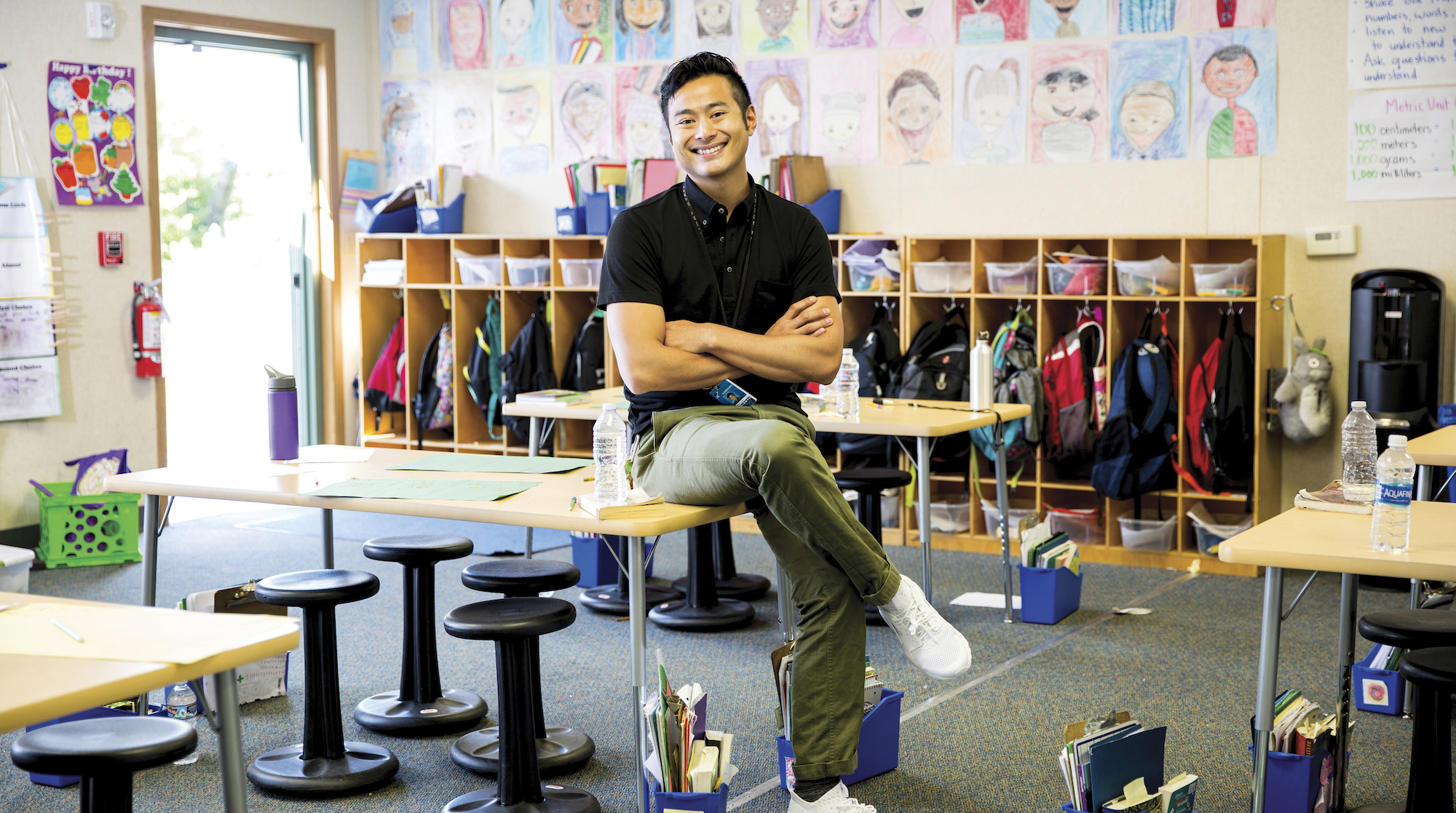

Kert Lin’s boisterous fourth-graders at Lakeridge Elementary arrive well before the bell to help prepare for class or to go over math problems from their last assignment. Though it makes for a long day, Lin, ’07, ’11, relishes the routine. “The reason I’m passionate about my job is not necessarily the teaching,” he says, “but teaching these kids.”
Lakeridge, in the Renton School District, is one of the most diverse public schools in the state. Nearly 90 percent of the students are black, Latino or Asian, and about half speak a language other than English at home. Additionally, about 90 percent of students are eligible for free or reduced-price school meals.
In 2010, Lakeridge was in crisis. Only one in five students could pass the state mathematics assessment test. The elementary school was in the bottom 5 percent in the state.
With a federal School Improvement Grant in hand, school administrators reached out to the UW College of Education for help developing new methods for teaching reading and math. The teachers threw themselves into the effort, exploring new techniques. In just two years, the percentage of Lakeridge students passing Washington’s math assessment nearly tripled and the school became a model for the state. The assessment scores continue to improve and, thanks to the exceptional efforts of teachers like Lin, Lakeridge was named a 2016 state School of Distinction.
Lin knows firsthand the difference a school can make. He grew up in one city, but “it felt like two different worlds,” he says. While his family lived in a predominantly white, middle-class neighborhood in North Seattle, they owned a grocery in the Central District. Lin attended grade school near the store. “It was very similar to Lakeridge,” he explains. “Near public housing, very diverse, a large immigrant population. That’s where my friends were and where my identity was set.”
So when Lin shifted to a middle school closer to home, “I went from being at the top of my class to struggling to stay afloat,” he says. “I thought to myself, ‘If I’m having this much trouble, how are my friends in the Central District doing?’ That was the first time I realized that there was this idea of inequity in our education system.”
Lin’s own school switch put him on a different trajectory than that of his grade school peers—one that led to college and graduate school at the UW. Two years ago, he realized just how different. He was helping a student with behavioral issues who also had challenges at home. He struggled to reach the student’s parents. When Lin finally heard back, he recognized the name on the caller ID: it was a former classmate from the Central District.
Now Lin is focused on helping his students learn to reason, discuss and work together. Math class no longer means memorization and drills; it’s a place of discussion-based learning and exploring different routes to solve a problem. This sets the students up for learning new mathematical concepts, says Lin, from trigonometry in high school to calculus in college.
Lin often thinks about the limited resources his classmates once had. “I don’t want that for my students,” Lin says. “I don’t want them to grow up and continue this cycle. That’s why I’m here, to give them a future that is successful.”